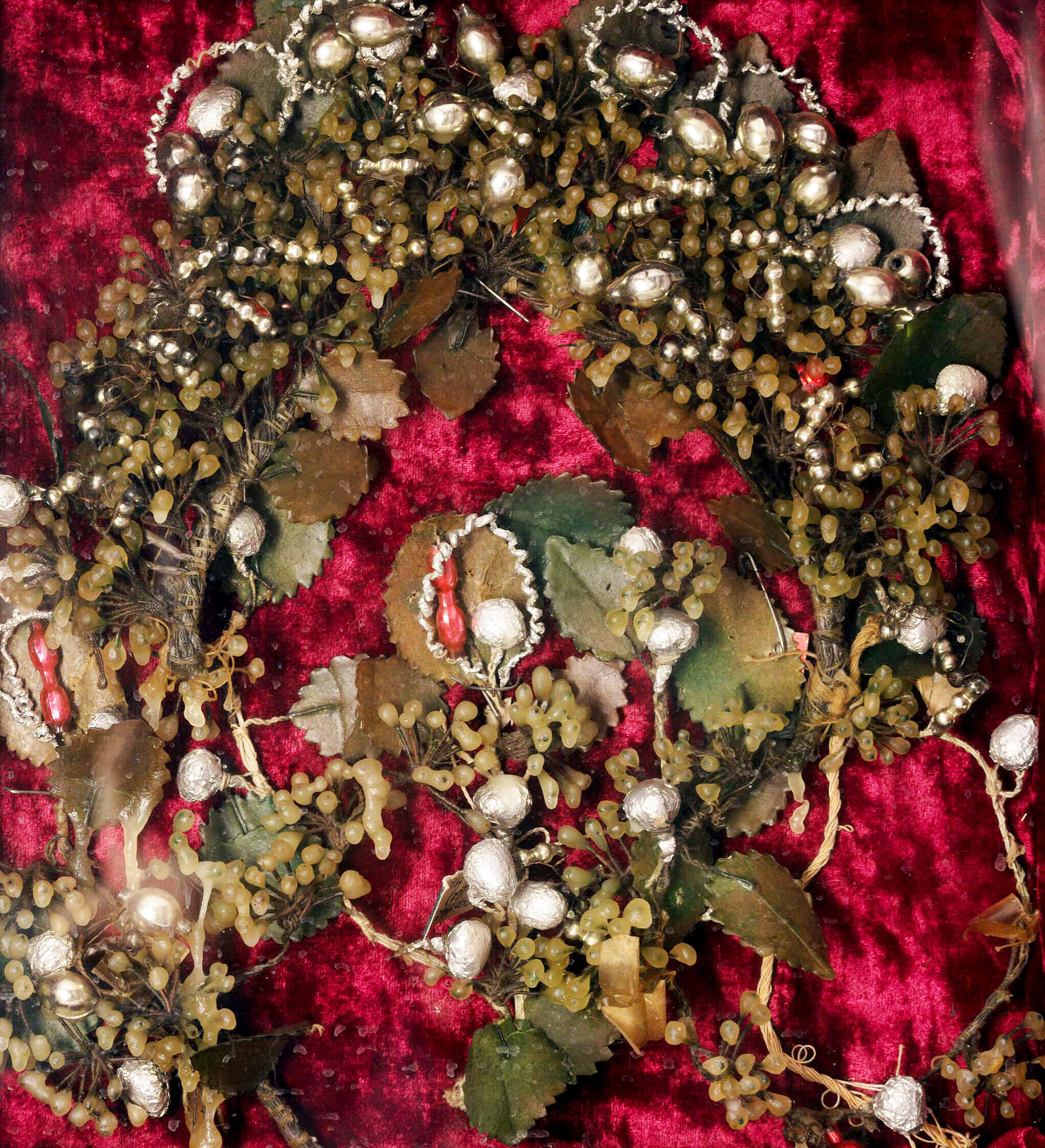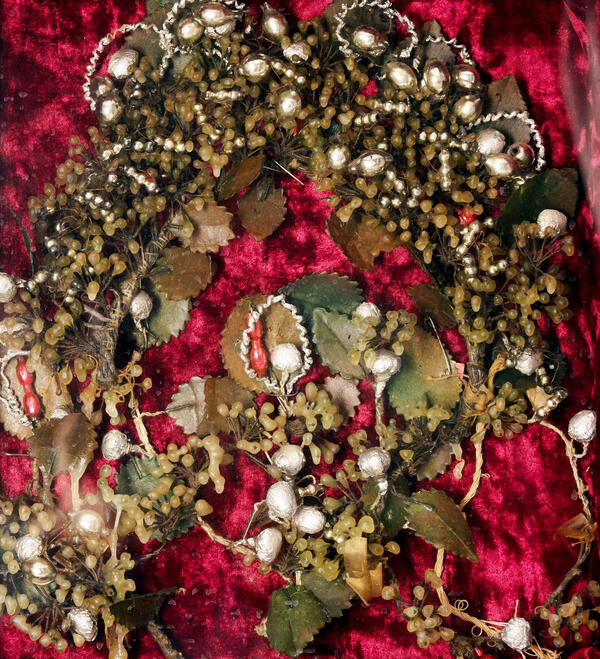The original wedding wreath of the Sarepta woman is kept in the museum-reserve ‘Old Sarepta’. In Sarepta, such wreaths were called ‘rosencrantz’, literally ‘a wreath of roses’, although it was made from other flowers and ornaments. Along with the Rosencranz, the wedding decoration included the ‘bridal twig’ and the ‘groom’s twig’ - white buds of natural or artificial flowers attached to the chest. White symbolized moral purity.
The wedding ceremony of the Sarepta Hernguters - representatives of Protestantism - was based on the “religion of marriage”. This is a specific system of views of the Hernguters on the relationship between people and God. According to her, a woman was considered as the bride of Jesus Christ, temporarily married to his representative. Therefore, it should not matter to her whom to marry, as long as the companion of earthly life is a true Christian, a member of the fraternal community.
Therefore, until 1823, people in Sarepta got married by lot. This rite was also based on the belief in the need for divine guidance in important aspects of human life. It was believed that a person could easily make a mistake in choosing a spouse, and therefore they tried to avoid this by drawing lots. The Hernguters believed that when drawing lots, God would show them the right decision.
When determining married couples on the appointed day in the church they pulled out the folded sheets of paper with the written names of unmarried men and unmarried women from two bowls. This is how the case defined married couples.
This custom was abolished in 1823. However, the inhabitants of Sarepta continued to live up to the strict rules of their religion, and the bride’s wedding decorations remained unchanged for much of the 19th century.
Hernguters traditions required that the bride at the wedding ceremony should not have any wedding attributes, except for a rosencrantz and a twig. Since ancient times, the wedding wreath has been a symbol of the purity and innocence of the bride, not only at German weddings. The bride’s wreath symbolized the girl’s new birth as a wife leaving the old and entering a new life.
Girls were usually engaged in making wreaths on the eve of the wedding. Rosencrantz was made like this: they put flower petals, leaves, twigs, beads and other decorations on the wire or pork bristles, which served as the frame of the wreath. In winter, flowers were made from colored paper, then dipped in molten wax or paraffin to stiffen it. The end of the pig bristle was dipped into wax and woven into a wreath. Wedding wreaths have been kept for whole life.
The wedding ceremony of the Sarepta Hernguters - representatives of Protestantism - was based on the “religion of marriage”. This is a specific system of views of the Hernguters on the relationship between people and God. According to her, a woman was considered as the bride of Jesus Christ, temporarily married to his representative. Therefore, it should not matter to her whom to marry, as long as the companion of earthly life is a true Christian, a member of the fraternal community.
Therefore, until 1823, people in Sarepta got married by lot. This rite was also based on the belief in the need for divine guidance in important aspects of human life. It was believed that a person could easily make a mistake in choosing a spouse, and therefore they tried to avoid this by drawing lots. The Hernguters believed that when drawing lots, God would show them the right decision.
When determining married couples on the appointed day in the church they pulled out the folded sheets of paper with the written names of unmarried men and unmarried women from two bowls. This is how the case defined married couples.
This custom was abolished in 1823. However, the inhabitants of Sarepta continued to live up to the strict rules of their religion, and the bride’s wedding decorations remained unchanged for much of the 19th century.
Hernguters traditions required that the bride at the wedding ceremony should not have any wedding attributes, except for a rosencrantz and a twig. Since ancient times, the wedding wreath has been a symbol of the purity and innocence of the bride, not only at German weddings. The bride’s wreath symbolized the girl’s new birth as a wife leaving the old and entering a new life.
Girls were usually engaged in making wreaths on the eve of the wedding. Rosencrantz was made like this: they put flower petals, leaves, twigs, beads and other decorations on the wire or pork bristles, which served as the frame of the wreath. In winter, flowers were made from colored paper, then dipped in molten wax or paraffin to stiffen it. The end of the pig bristle was dipped into wax and woven into a wreath. Wedding wreaths have been kept for whole life.



